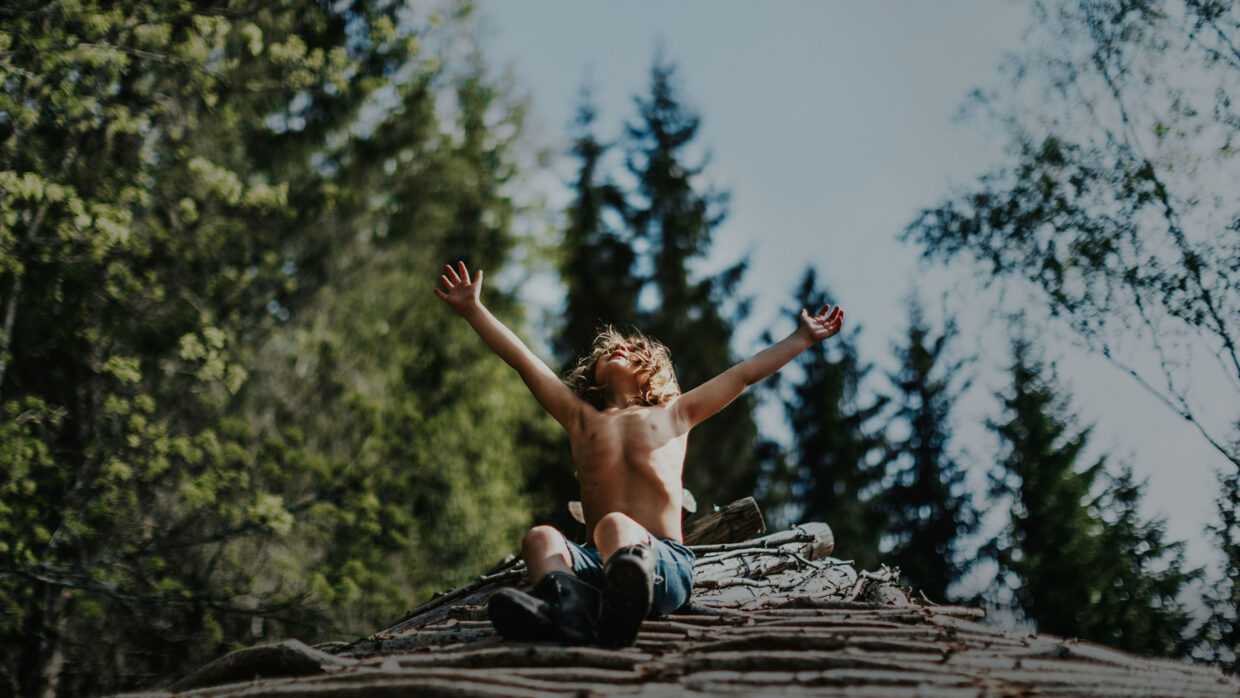 Back to selection
Back to selection
“I Still Find Myself Getting Moved by the Film, Despite Having Watched It Hundreds of Times”: Editor Mari Bakke Riise on A New Kind of Wilderness
 A New Kind of Wilderness Photo by Maria Gros Vatne.
A New Kind of Wilderness Photo by Maria Gros Vatne. Premiering in the World Documentary Competition at the 2024 Sundance Film Festival, A New Kind of Wilderness is a portrait of the Payne family, who reside in the remote Norwegian wilderness in an attempt to disconnect from the modern world. When a tragic event befalls the family, however, the remaining members are forced to reintegrate into a society they once rejected.
Editor Mari Bakke Riise, who previously worked with director Silje Evensmo Jacobsen on an episodic project, explains how she navigated the lack of a specific family member on-screen while cutting the film.
See all responses to our annual Sundance editor questionnaire here.
Filmmaker: How and why did you wind up being the editor of your film? What were the factors and attributes that led to your being hired for this job?
Bakke Riise: I had previously worked with the director on a TV series, and in that process we developed a really good working relationship. When she was looking for an editor for this film she felt like I was the right man for the job, and I was very happy to accept the job.
Filmmaker: In terms of advancing your film from its earliest assembly to your final cut, what were your goals as an editor? What elements of the film did you want to enhance, or preserve, or tease out or totally reshape?
Bakke Riise: One of the main themes in the film is grieving the loss of a mother, and we always knew that we wanted to include the mother as a character in the story. But in the assembly we hadn’t figured out how to do it. Maria, the mother, worked as a photographer and shared photos and stories from her life on her blog. We wanted to find a way to use that in the film. The idea of using her stories as a voice over came early on in the process, but finding a natural way to include it so that it helped drive the story forwards was the hard part.
Filmmaker: How did you achieve these goals? What types of editing techniques, or processes, or feedback screenings allowed this work to occur?
Bakke Riise: We created a parallel storyline in the film, in which Maria was still alive, that we cut to when the family was dealing with grief and issues caused by her passing away. To make the transition to those scenes feel natural, we used home video that Maria had shot were she spoke to her family. This made her much more present in the film, and helps the audience get to know her, which again creates a better understanding of the family’s grief and allows you to grieve with them.
Filmmaker: As an editor, how did you come up in the business, and what influences have affected your work?
Bakke Riise: I started out as an intern at a documentary production company where I got the chance to do some editing. When my internship ended I went to film school and specialized in editing to really learn the craft. After film school, I started working in the industry, taking on any job I could get in post production and then worked my way up to become an editor.
Filmmaker: What editing system did you use, and why?
Bakke Riise: I used Adobe Premiere Pro because I’m very familiar with the software and I knew the workflow well. We also had material from many different sources, and Premiere allows you to use everything in the same timeline without having to transcode it, which saved us a lot of time in the edit.
Filmmaker: What was the most difficult scene to cut and why? And how did you do it?
Bakke Riise: There is a scene we’re Nik talks with his father, and the father tells Nik it’s time to move on, and that he deserves to be happy. The problem with this scene is that we didn’t have any video from it, only the sound and the scene was too important not to include it in the final edit. I had footage of the two of them talking together so I used that as a start to the scene, but when the father asks if Nik has met anyone new, I wanted to create the feeling that this is too hard for Nik to even think about, so I cut away to Nik walking into a greenhouse as if to escape the conversation. Then I use the audio of the conversation under the pictures of him in the greenhouse.
Filmmaker: Finally, now that the process is over, what new meanings has the film taken on for you? What did you discover in the footage that you might not have seen initially, and how does your final understanding of the film differ from the understanding that you began with?
Bakke Riise: I still find myself getting moved by the film, despite having watched it hundreds of times. I think that’s proof that we accomplished to make a compelling and emotional movie. I also find it very inspiring how the family in the film manages to stay true to their vision of how they want to live their live, and I think it will make a lot of people think about they live their own lives.
